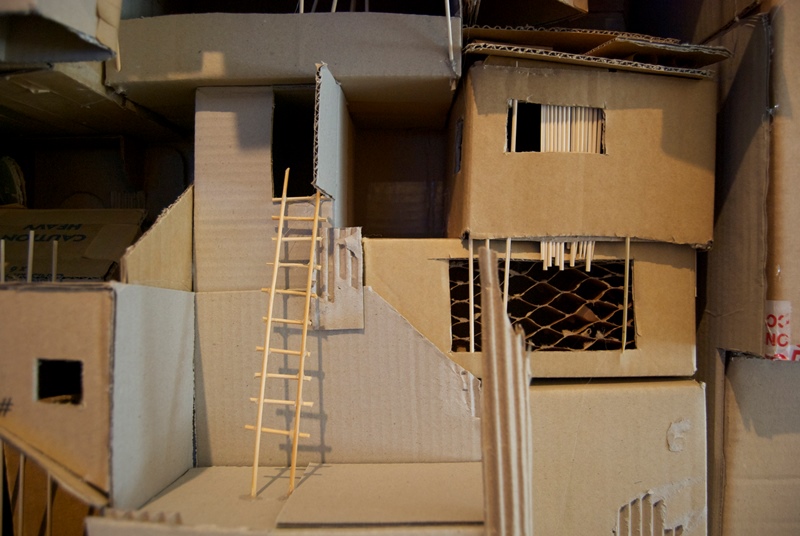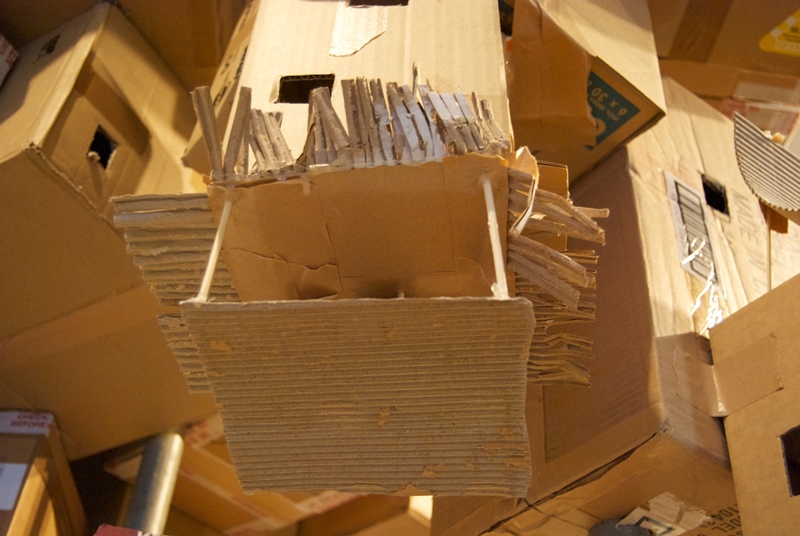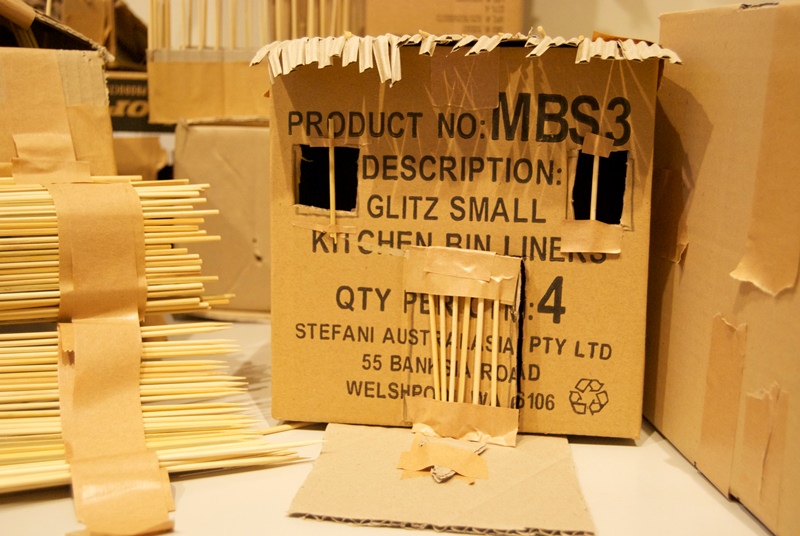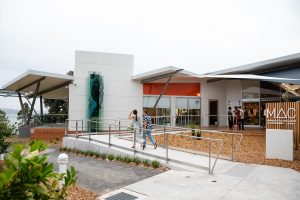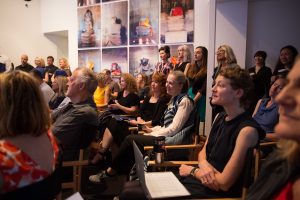Recently M&G went to Lake Macquarie City Art Gallery to interview a bunch of enthusiastic kids working with In-Habit artists Alfredo and Isabel Aquilizan. It was quite a day watching eager 8 year olds build their cardboard houses and seeing them respond to the growing metropolis taking shape in the gallery.
We witnessed the development and furnishing of a bat-cave, a flower shop and several grand abodes–one complete with roof-top pool and reptile garden.
First commissioned by Sherman Contemporary Art Foundation (SCAF) In-Habit: Project another country is a journey into making; into ideas about migration, home, about displacement and ‘making do’.
In-Habit began when the Aquilizans, themselves emigrants from the Philippines, became aware of the growing plight of the Badjao people, known as Sea Gypsies. The Badjao live on the coastal fringes of Sabah and the islands of the Philippines building homes on elevated platforms. They originally survived as sea nomads by fishing and pearl diving, moving throughout the region in boats. Today they are a marginalised group resulting from a rapidly changing world and ethnic unrest in the region.
The Badjao story of displacement and adaption interested the artists who had long been making work around ideas of migration and memory. In-Habit has materialised twice before appearing at Lake Macquarie Art Gallery–its genesis was at the Sherman Contemporary Art Foundation before moving to the 21st Century Museum of Contemporary Art in Japan.
In each location, scaffold is braced together and cardboard boxes taped into place forming the core of the miniature cardboard community and evoking the Badjao’s precarious stilt shantytowns. The construction evolves over time and is guided by the interaction of children who build their own cardboard assemblages.
We witnessed the development and furnishing of a bat-cave, a flower shop and several grand abodes–one complete with roof-top pool and reptile garden. The participants aged between 8 and 11, displayed considerable ingenuity and manual dexterity, improvising with paper and cardboard to create everything from tiles and wall claddings to interior furnishings. The artists themselves position and secure the offerings from these workshops so that the installation develops as a collaborative and site-specific work.
It’s a masterpiece of invention and creation, where man can play architect, builder and town planner. It’s underpinned with stories of sea gypsies, woven with lullabies of home and taped into existence by the scientific engineering of 3M packaging tape.


